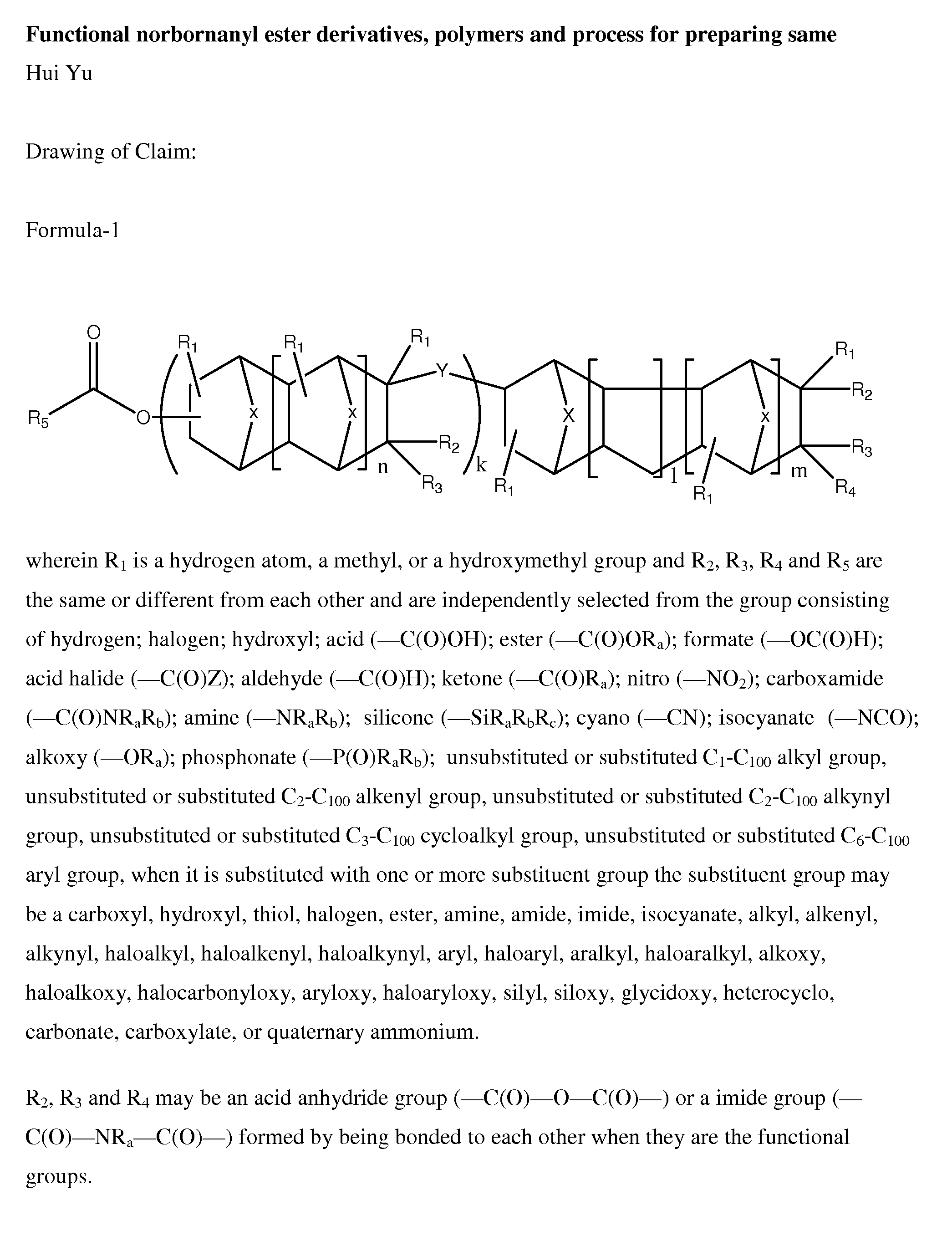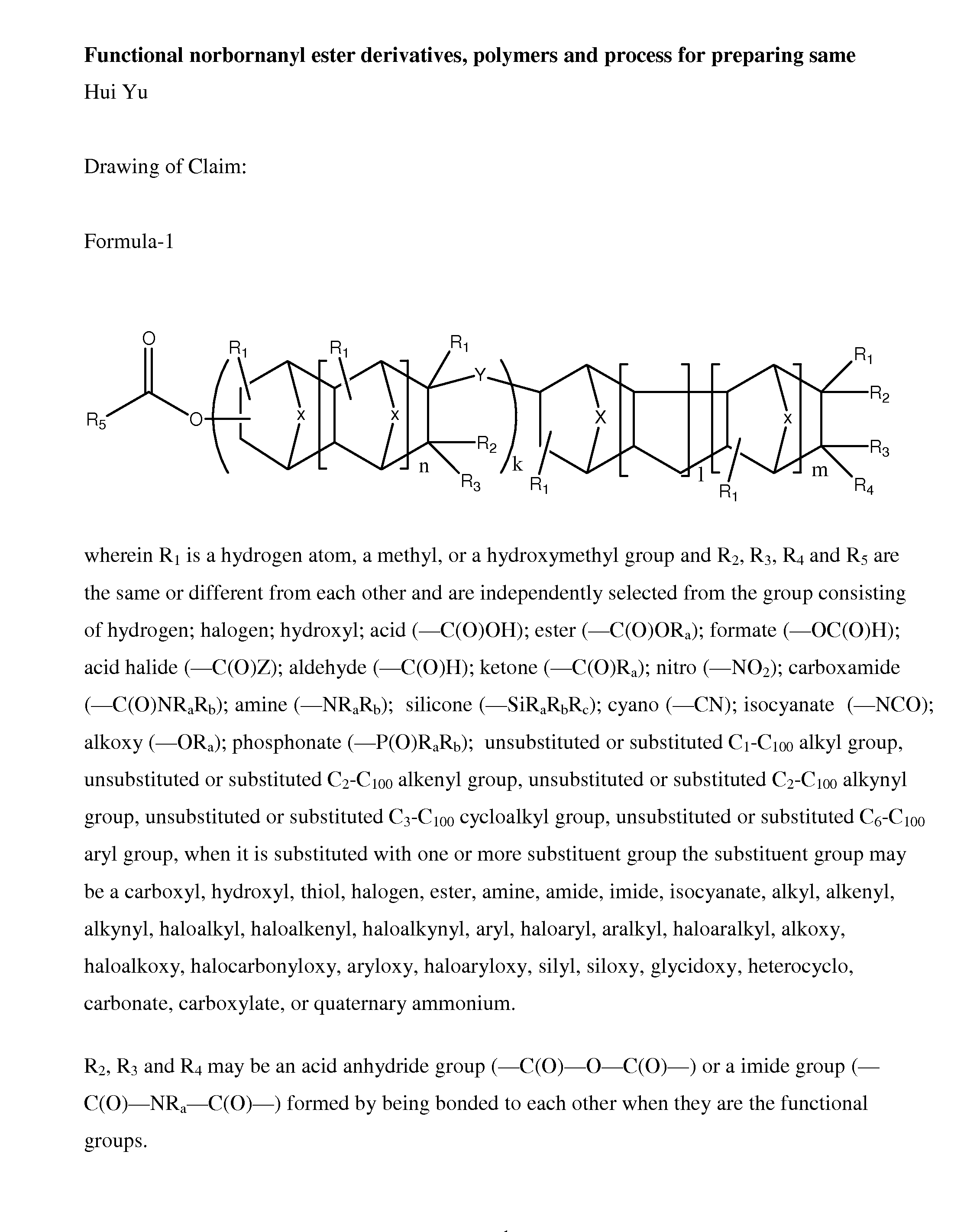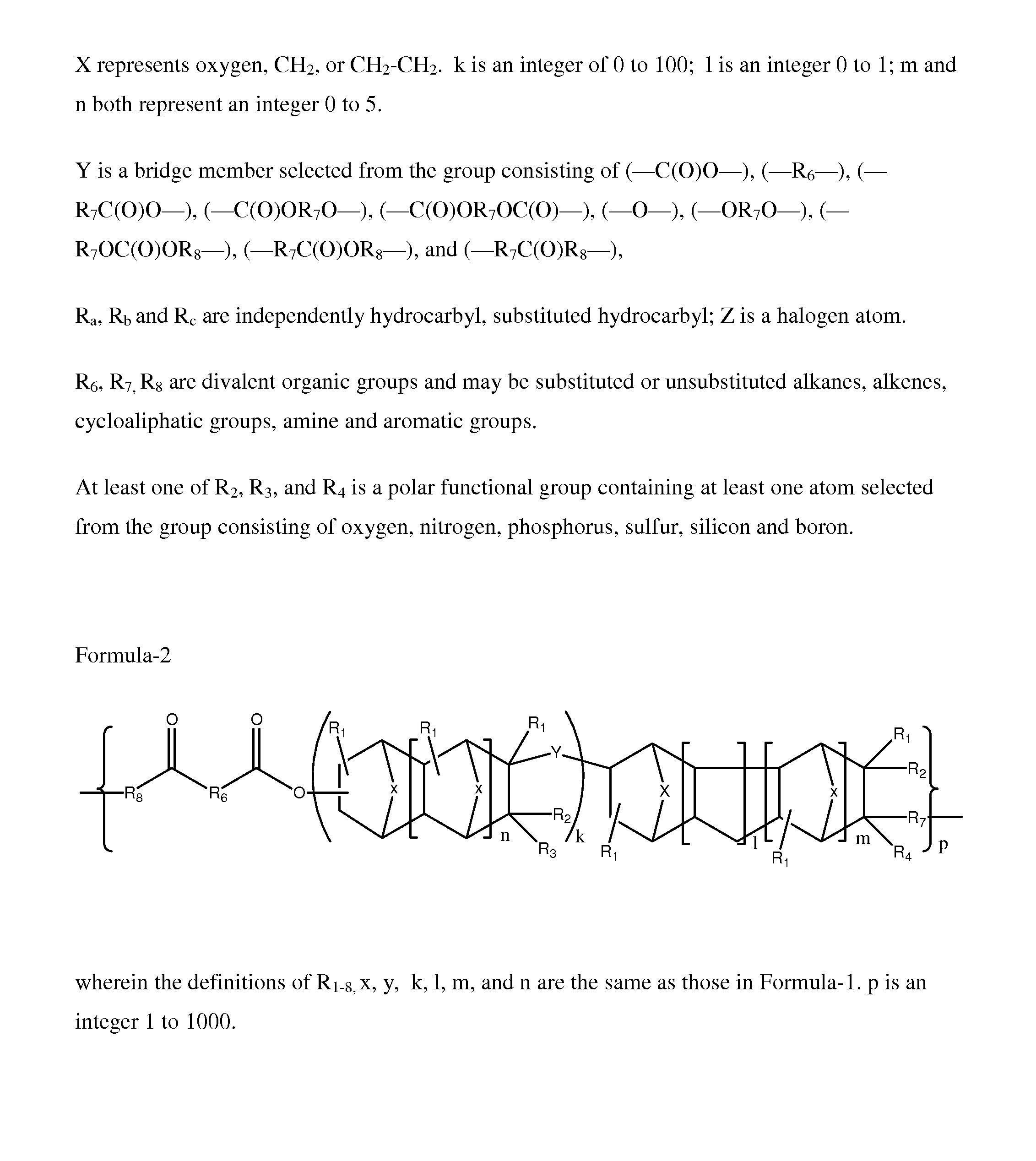Functional norbornanyl ester derivatives, polymers and process for preparing same
a technology of norbornanyl ester and polymer, applied in the field of functional norbornanyl ester derivatives, polymers, can solve the problems of no report on the efficient preparation of ridged, bicyclic skeleton derivatives or polymers with hydrocarboxylation reaction, and is unavailable in the industry or environmentally and economically impractical, etc., to achieve poor printing effect, poor dispersibility of pigments, and poor flowability
- Summary
- Abstract
- Description
- Claims
- Application Information
AI Technical Summary
Benefits of technology
Problems solved by technology
Method used
Image
Examples
example
[0177]The following Examples are being supplied to further define various species of the present invention, it being noted that these examples are intended to illustrate and not limit the scope of the present invention. Parts and percentages are by weight unless otherwise indicated.
[0178]Viscosity was measured by Brookfield Viscometer. Softening point was measured by LP-16 Softening Point Ring and Ball Apparatus
[0179]The molecular weight is measured by the gel permeation chromatography (GPC) and the glass transition temperature (Tg) is measured by the differential scanning calorimetriy (DSC).
[0180]Gel time test involves determining the gel time, cure time and peak temperature for a formulation catalyzed with 1% benzoyl peroxide maintained at 180° F. (82.2° C.) in a water bath. The gel time is defined as the time required to go from 150° to 190° F. The cure time is defined as the time from 190° F. to the peak temperature (the total time to peak is the sum of the two), and peak temper...
specific embodiments
Example 1
Preparation of 5-norbornene-2,3-dicarboxylic acid (NBCO2H)
[0184]To a three-neck, round-bottom flask equipped with a mechanical stirrer, a Dean-Stark trap, a nitrogen inlet, and a water condenser were charged freshly distilled cyclopentadiene (198.3 g, 3.0 moles) was added to a solution of freshly distilled acrylic acid (216.2 g, 3.0 moles). The solution had a temperature between 5° C. and 10° C. The exothermic reaction was controlled by an ice bath. The cyclopentadiene was added to the solution over a period of one hour and after all the cyclopentadiene had been added, the solution was allowed to warm to ambient temperature.
[0185]After a reaction period of 16 hours, gas chromatographic (GC) analysis indicated a NBCO2H mixture of isomers with 83% purity and about 2% adduct of cyclopentadiene and acrylic acid dimer.
example 2
Preparation of MAc-NBCO2H dicarboxylic acid
[0186]Maleic acid (160.0 g, 1.38 mole) was added at in 60° C. to the NBCO2H (276.4 g, 2.00 mole) prepared in Example 1. The exothermic reaction was kept one hour at 60-90° C. and one hour at in 90-110° C. Maleic acid (84.0 g, 0.72 mole) was added and reacted for about 2 hours at 110-120° C. and one hour at 120-130° C. to obtain a MAc-NBCO2H dicarboxylic acid with an acid number of 413 mg KOH / g.
PUM
| Property | Measurement | Unit |
|---|---|---|
| temperatures | aaaaa | aaaaa |
| temperatures | aaaaa | aaaaa |
| pressure | aaaaa | aaaaa |
Abstract
Description
Claims
Application Information
 Login to View More
Login to View More - R&D
- Intellectual Property
- Life Sciences
- Materials
- Tech Scout
- Unparalleled Data Quality
- Higher Quality Content
- 60% Fewer Hallucinations
Browse by: Latest US Patents, China's latest patents, Technical Efficacy Thesaurus, Application Domain, Technology Topic, Popular Technical Reports.
© 2025 PatSnap. All rights reserved.Legal|Privacy policy|Modern Slavery Act Transparency Statement|Sitemap|About US| Contact US: help@patsnap.com



